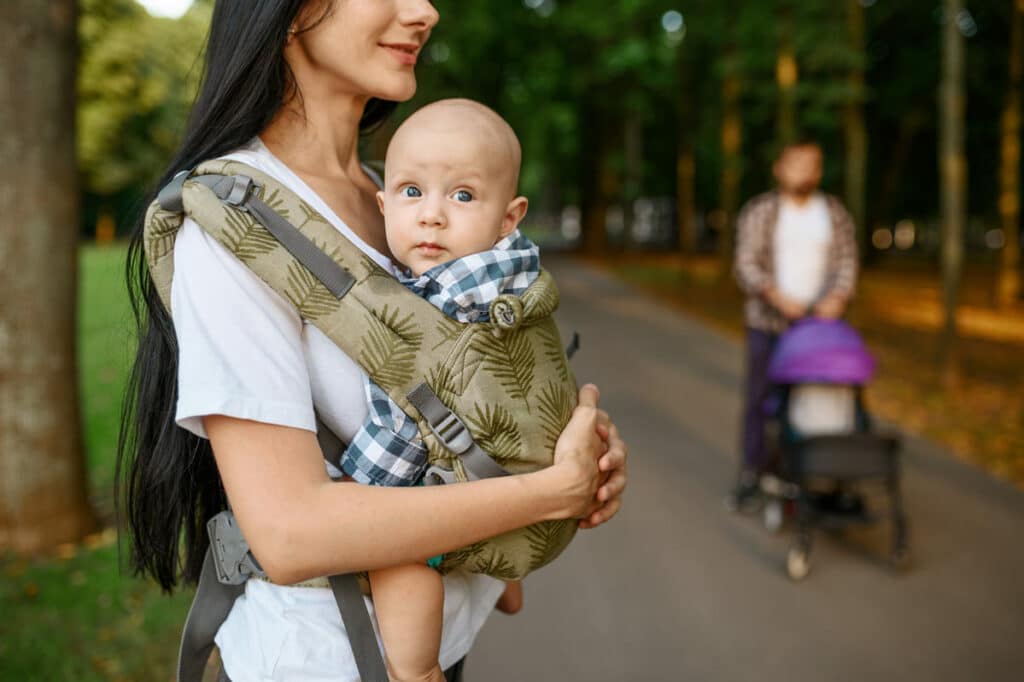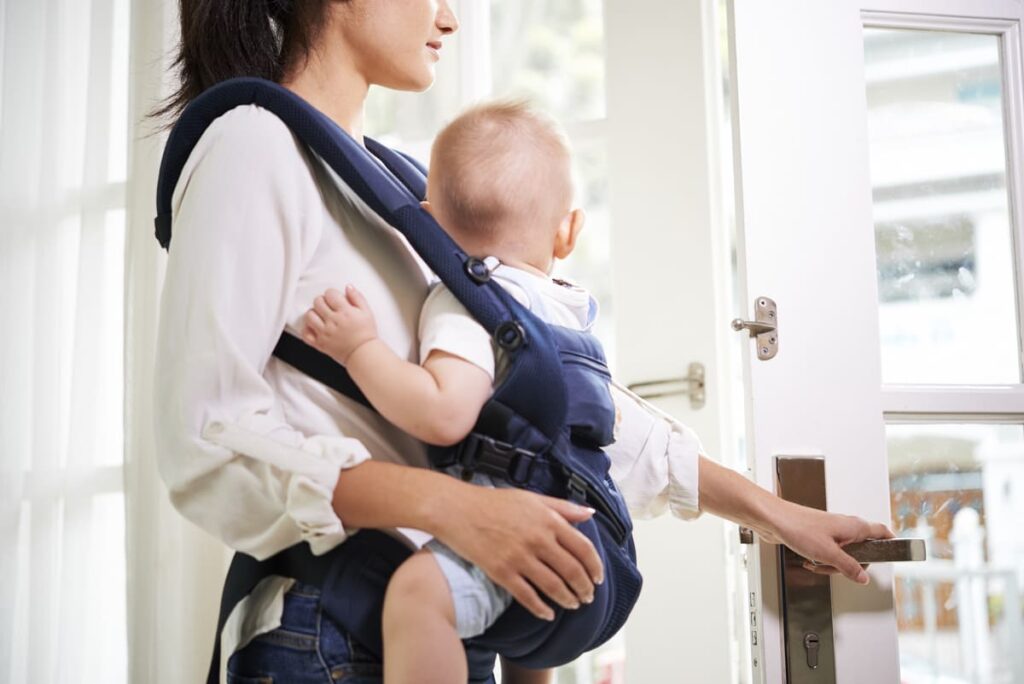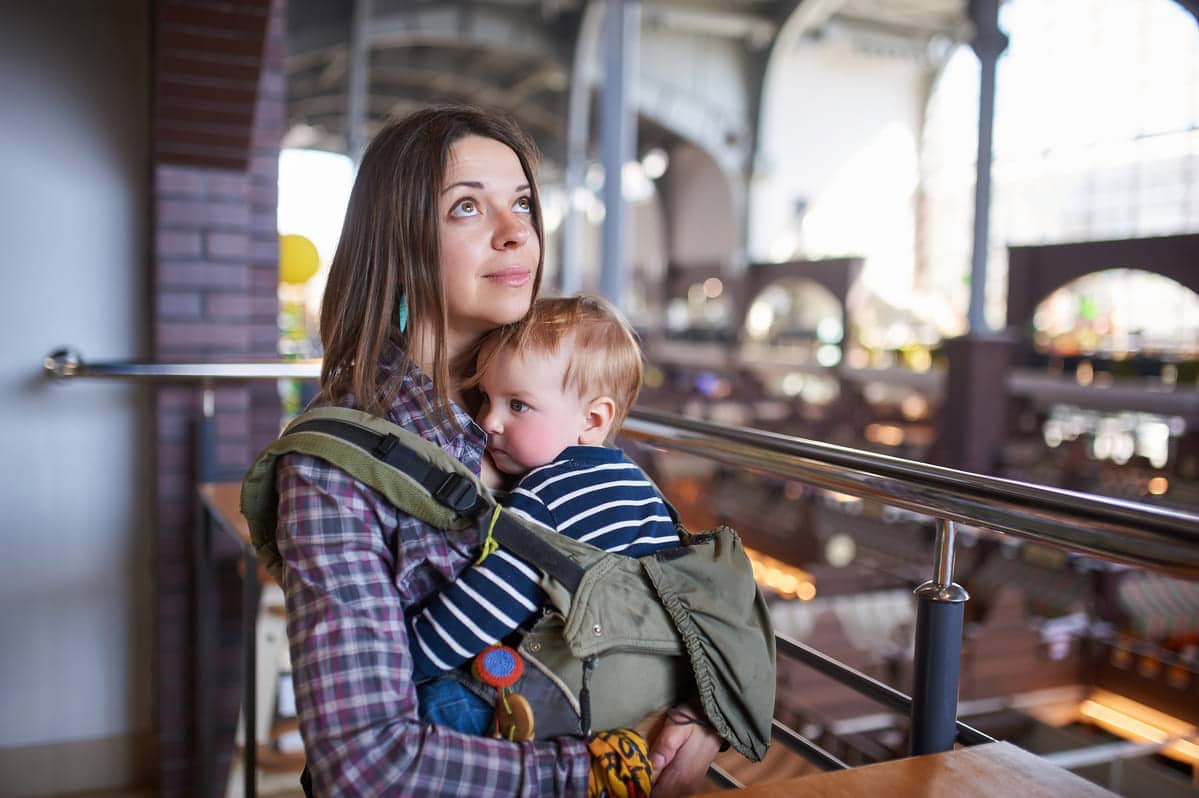Baby carriers are a great way to keep your little one close while still being able to move around and get things done. However, as with any baby gear, there are certain safety guidelines that should be followed to ensure your baby’s well-being. In this blog, we will discuss 5 important safety guidelines for using baby carriers. By following these guidelines, you can rest assured that your baby is safe and secure while being carried around. So, scroll down to find out more!
Understanding Baby Carrier Safety
Baby carriers are a type of gear designed to strap your baby onto your body while you go about your daily activities. They provide a hands-free option for carrying your little one and can be used both indoors and outdoors.
However, it’s important to note that not all carriers are created equally. Some may have different features and styles, but all of them should adhere to certain safety guidelines to ensure the well-being of your baby. Following these guidelines will not only protect your baby but also give you peace of mind while using the carrier.

What Are The Safety Guidelines To Follow?
Baby carriers should always be used according to the manufacturer’s instructions. Improper use of a carrier can lead to accidents and pose a risk to your baby’s safety. Here are 5 important safety guidelines that you should keep in mind while using a baby carrier:
1. Proper Positioning and Alignment
Proper positioning and alignment are crucial when using a baby carrier to ensure the comfort and safety of your little one. Here are some detailed instructions on how to position the baby correctly in the carrier:
- Start by adjusting the carrier straps and buckles according to your size and comfort. Make sure they are secure but not too tight.
- Place your baby in an upright position, facing inward towards your chest. Ensure that their bottom is supported and their knees are slightly higher than their hips.
- The baby’s back should be well-supported by the carrier, with the spine in a neutral position. Avoid any slumping or curling of the spine.
- Check that the carrier provides adequate head and neck support, especially for newborns. Their head should be in line with their body, not tilted forward or to the side.
Maintaining a neutral spine position is important for the baby’s development and comfort. It also helps evenly distribute their weight, making it easier for you to carry them. However, it’s essential to ensure that the baby’s face is visible and not covered by fabric or accessories. This allows for proper air circulation and monitoring of the baby’s breathing.
2. Weight Limits and Restrictions
Every baby carrier has its recommended weight limit, and it’s essential to adhere to it for your baby’s safety. Overloading a carrier can cause strain on your back and shoulders and increase the risk of accidents or injury to your baby. Each type of carrier, such as wraps, slings, and structured carriers, has specific weight limits that should be followed. Here is an overview of weight limits for different types of carriers:
| Carrier Type | Weight Limit |
| Wraps | 3.6–10 kg |
| Stretchy wraps | Up to 7–8 kg |
| Ring slings | 3.5–15 kg |
| Soft structured carriers | 3.2–15 kg or 20 kg |
| Hard structured carriers | Up to 15 kg |
| Sling carriers | 8–33 lbs |
| Mei-Tai carriers | 0–3 years |
| Backpack carriers | 6–36 months |
| Hip seats | 4 months–33 lbs |
As your baby grows, it may be necessary to transition to a different type of carrier that accommodates their increasing weight and size. This ensures proper support and comfort for both you and your baby. Always refer to the manufacturer’s instructions for weight limits and restrictions.

3. Secure Straps, Buckles, and Fastenings
The straps, buckles, and fastenings of a baby carrier should always be properly secured to prevent any accidents or falls. It’s essential to check them before each use and make sure they are not worn out or damaged. Here are some tips for checking the straps and fastenings:
- Start by adjusting the shoulder straps to the desired length. Ensure they are equal on both sides. Loosen them enough to comfortably get your baby into the carrier.
- Place your baby in an upright position, facing inward towards your chest. Position their legs and hips according to the carrier’s guidelines.
- Secure the waistband or hip belt around your waist or hips, depending on the carrier design. Make sure it fits snugly but not too tight.
- Buckle or fasten all other straps, depending on the carrier design, and ensure they are secure.
- Check for any loose or dangling straps that can pose a tripping hazard. Secure them by using loops or clips provided by the manufacturer.
If you feel uncomfortable with how your baby is positioned or if the straps and buckles do not seem secure enough, do not use the carrier and consult the manufacturer for assistance.
4. Supporting the Baby’s Head, Neck, and Spine
When using a baby carrier, it’s crucial to support your baby’s head, neck, and spine appropriately. Newborn babies have limited control over their head and neck muscles, making it crucial to choose a carrier that provides adequate support. Look for carriers that have a structured headrest or adjustable panels that can be folded to support the baby’s neck and head.
Here are some tips for choosing a carrier with proper head and neck support, especially for newborns:
- Opt for carriers that offer an ergonomic design. Look for carriers that naturally curve the baby’s spine and keep their knees higher than their bottom (known as the “M” position). This helps in supporting their head, neck, and spine alignment.
- Consider carriers that have adjustable headrests or panels. These features allow you to customize the support according to your baby’s size and needs.
- Look for carriers made from breathable and soft materials. Ensure that the carrier’s fabric is gentle on the baby’s delicate skin and allows for proper airflow.
Furthermore, always double-check the head and neck support when positioning your baby in the carrier. Make sure to adjust the headrest or panels for a snug fit, preventing any slumping or tilting of the head. By providing adequate support, you can ensure the safety and comfort of your little one while using a carrier.

5. Checking for Proper Air Flow and Temperature Control
Proper airflow and temperature control are essential for your baby’s safety, especially during hot weather. Make sure to check that the carrier allows proper ventilation and doesn’t trap heat against your baby’s body. Here are some tips for ensuring proper airflow and temperature control while using a carrier:
- Choose carriers made from breathable materials, such as cotton or mesh fabrics. These materials allow for proper air circulation, preventing your baby from getting too hot.
- Consider using a lightweight and compact carrier designed specifically for warm weather. These carriers are typically made from breathable materials and have features like sunshades or removable panels for added ventilation.
- Always check on your baby’s temperature while using the carrier and take breaks if necessary. It’s natural for babies to get warm and sweaty when being carried, so it’s essential to monitor their comfort level.
Remember that overheating can be dangerous for babies, increasing the risk of heat exhaustion or SIDS (sudden infant death syndrome). Parents should always be mindful of their baby’s temperature while using a carrier and make adjustments as needed to ensure their safety.
Additional Safety Considerations While Using A Carrier
Using a baby carrier can be both convenient and beneficial for parents and their little ones. However, it’s essential to follow safety guidelines and take necessary precautions to ensure your baby’s well-being while using a carrier. Here are some general safety tips to keep in mind:
- Always read the manufacturer’s instructions carefully before using a carrier.
- Practice using the carrier with assistance from a partner or friend until you feel comfortable and confident using it on your own.
- Avoid using carriers while participating in activities that involve rigorous movements, such as running or exercising.
- Always make sure the carrier is properly secured and adjust any loose straps before each use.
- Take breaks when necessary to check on your baby’s well-being and comfort level.
- Regularly check the carrier for any signs of wear and tear, and replace it if necessary.
- Stop using the carrier immediately if you notice any discomfort or redness on your baby’s skin. Consult a pediatrician if necessary.
- Always follow the weight and age limits specified by the manufacturer.
- Lastly, trust your instincts. If something doesn’t feel right or if your baby seems uncomfortable, stop using the carrier and consult a professional for assistance.
Conclusion
To sum it up, baby carriers offer a convenient and safe way to carry your little one while keeping your hands free. However, it’s crucial to choose the right carrier and use it correctly following safety guidelines. By following general safety tips, you can ensure that your baby stays safe and comfortable while using a carrier, allowing you both to enjoy the experience. Remember to always prioritize your baby’s comfort and safety above all else when using a carrier!








![Home Renovation Guide [2025]](/app/uploads/2021/04/design-hacks-1-378x300.jpg)


